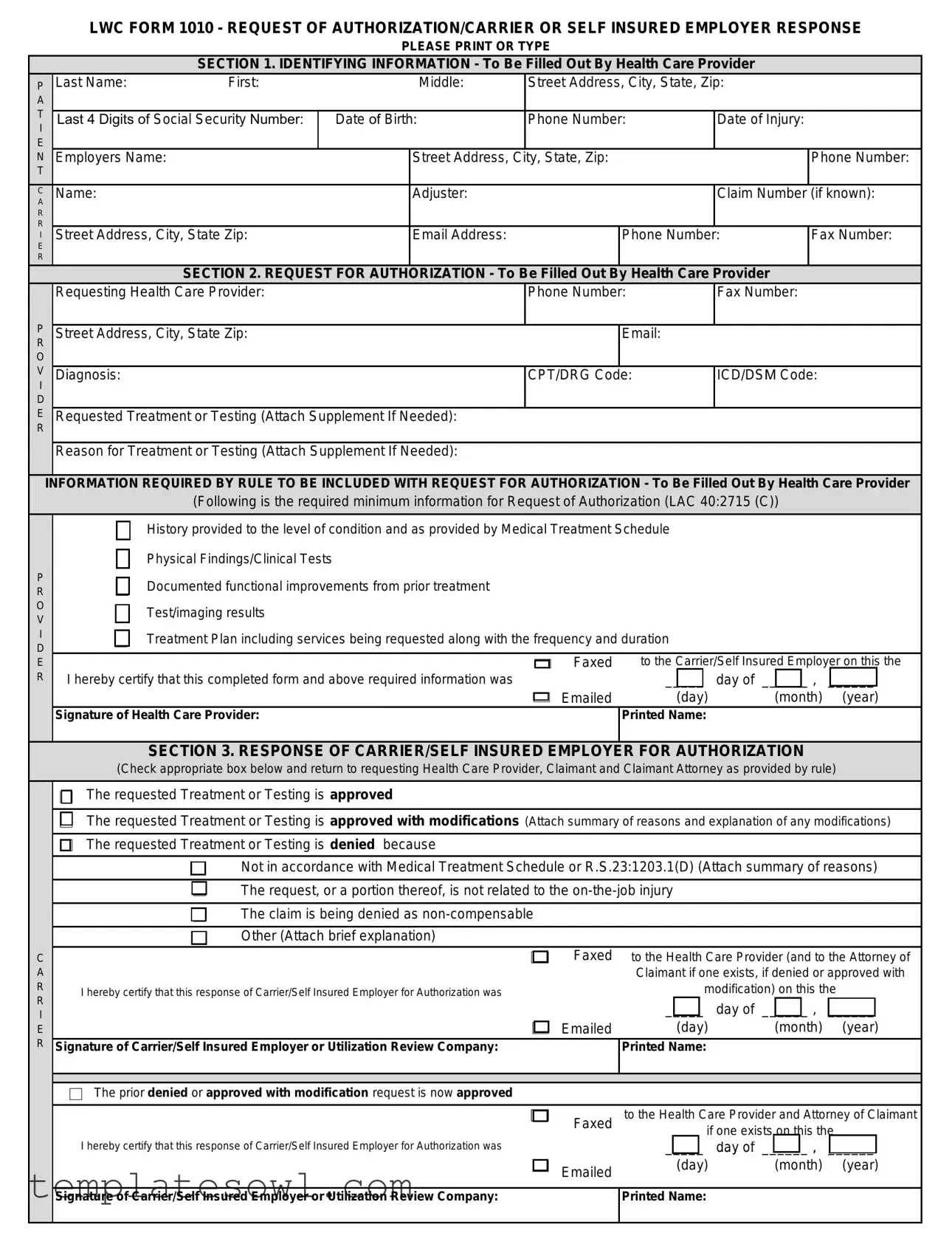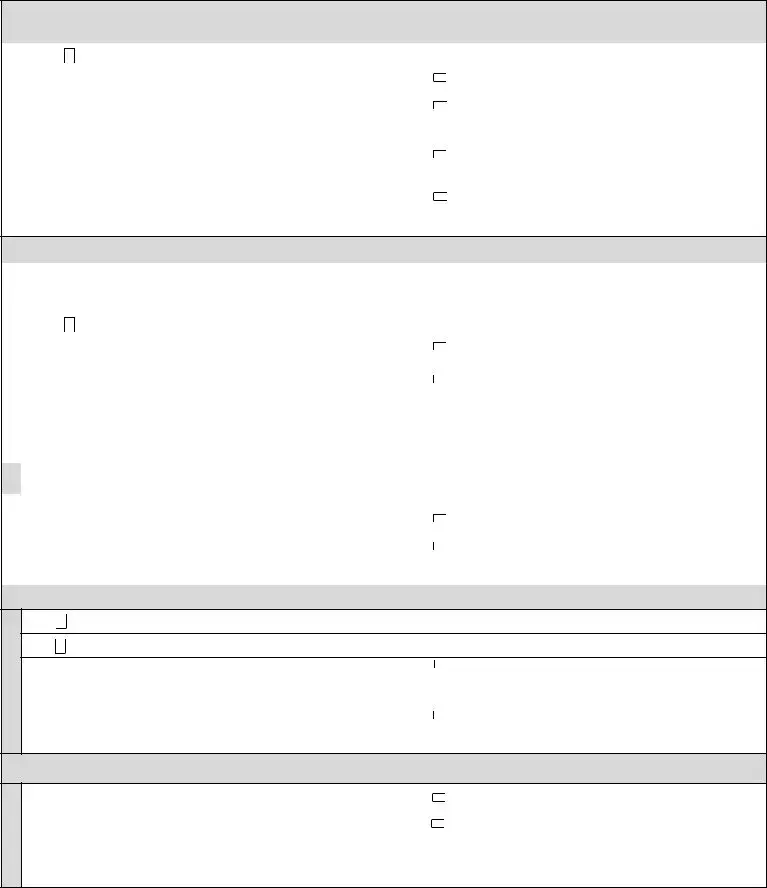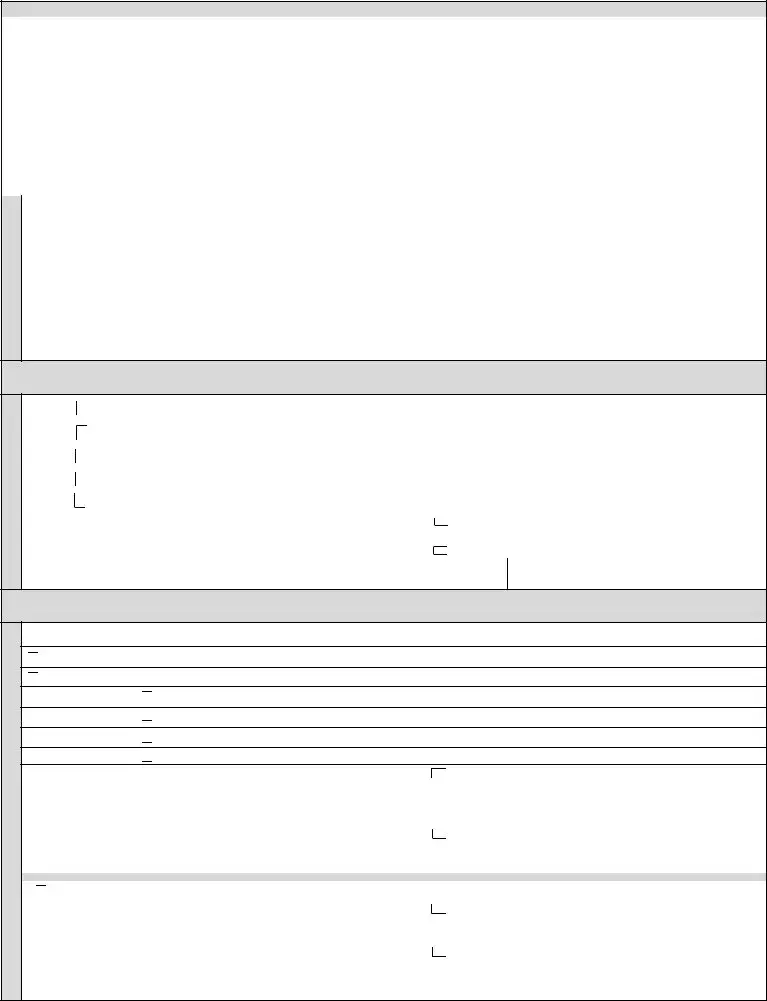Filling out the Form 1010 can be a straightforward process, but common mistakes can lead to delays or denials of requests. A prevalent error is failing to provide complete identifying information in Section 1. Health care providers must ensure that all fields, including names, addresses, and social security numbers, are filled out accurately. Incomplete data can hinder the processing of the request and further communication.
Another mistake relates to not including the diagnosis and relevant codes in Section 2. It's crucial to fill out the CPT/DRG and ICD/DSM codes correctly. Omissions or inaccuracies in this area can result in a denial due to insufficient information, delaying critical treatment for the injured party.
Inadequate explanations for requested treatments often surface as an issue. In Section 2, it's essential to provide detailed reasons for treatment or testing. Failure to attach supplemental documents when necessary may lead to complications. This information must clearly outline the rationale, demonstrating the need for the requested services.
Another frequent mistake is not certifying the date of submission. In multiple sections, including Section 2, the certifying signature must include the correct date. Any inaccuracies here can delay the request, as it may be flagged for further verification.
Neglecting to communicate with involved parties is another critical error. Health care providers should ensure that the form is sent to all appropriate parties listed throughout the document. This includes sending necessary notifications to the claimant and their attorney when applicable. Poor communication can lead to misunderstandings and further delays in treatment approval.
In addition, many providers fail to double-check the fax and email addresses entered. Incorrect contact details can result in important information not reaching its destination. Prior to submission, review each address thoroughly to ensure that communications are received by all involved parties.
Finally, overlooking the necessity for the required supplemental information as prescribed by LAC 40:2715 (C) can be detrimental. The request for authorization needs a complete history and documentation. Inadequate information may prompt a suspension of the prior authorization process, thus prolonging care for the injured worker.


